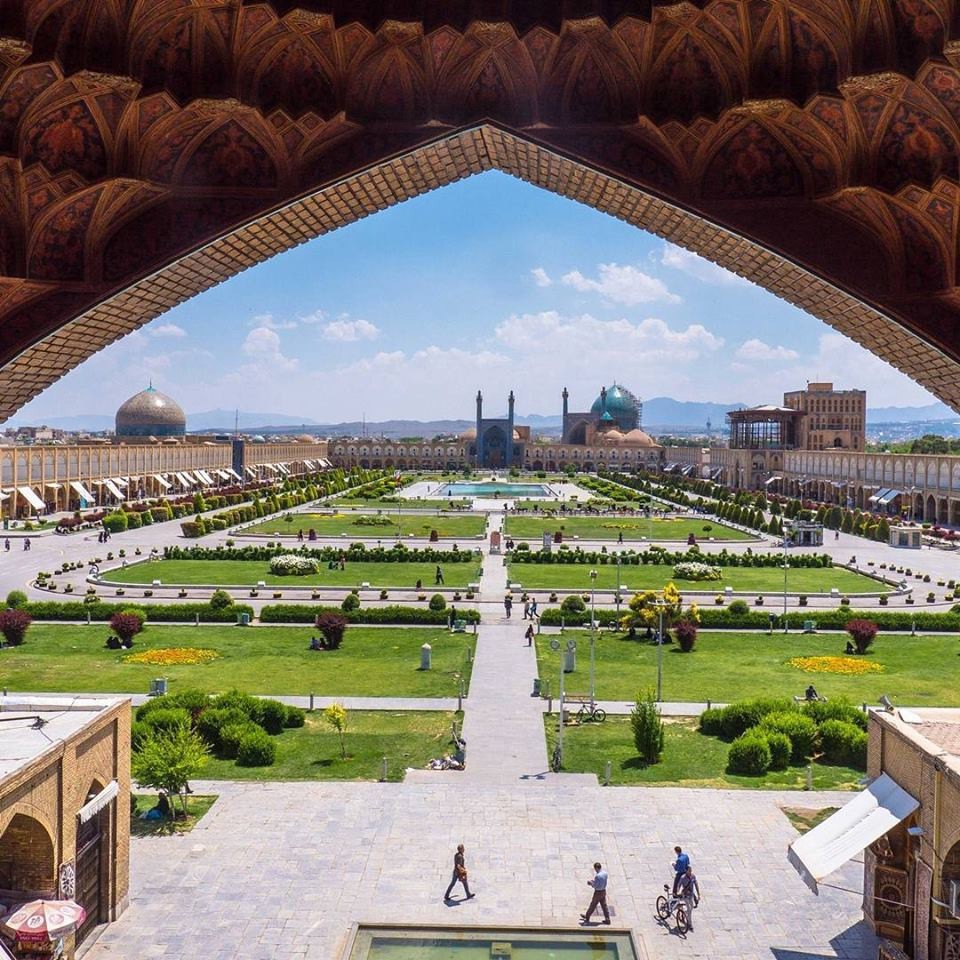看到NETFLIX的絲路之旅,經過伊朗 Isfahan City,一個兩百萬人口的大都市。
Naqsh-e Jahan Square (Persian: میدان نقش جهان Maidān-e Naghsh-e Jahān; trans: "Image of the World Square"), also known as the Saeed Square (میدان سعید), and Shah Square (میدان شاه) prior to 1979, is a square situated at the center of Isfahan, Iran. Constructed between 1598 and 1629, it is now an important historical site, and one of UNESCO's World Heritage Sites. It is 160 metres (520 ft) wide by 560 metres (1,840 ft) long (8.96公頃). It is also referred to as Shah Square or Imam Square.

這是一個甚麼樣的概念?16-17世紀的當下,波斯帝國Shah Abbas在此建造一個如此龐大的廣場、商場、皇宮及清真寺,僅供波斯帝王使用。而這是一個遷都之舉造就的新都市。
In 1598, when Shah Abbas decided to move the capital of his empire from the north-western city of Qazvin to the central city of Isfahan, he initiated what would become one of the greatest programmes in Persian history; the complete remaking of the city. By choosing the central city of Isfahan, with the Zāyande roud ("The life-giving river"), lying as an oasis of intense cultivation in the midst of a vast area of arid landscape, he distanced his capital from any future assaults by the Ottomans, the arch rival of the Safavids, and the Uzbeks, and at the same time gained more control over the Persian Gulf, which had recently become an important trading route for the Dutch and British East India Companies.
沒有帝國的力量,不可能出現這種建築與空間,因為如此,所以我們要喜愛帝國這個概念嗎?
有了帝國,人民算甚麼?一人之下,全國總動員,只為了個人喜好。窮兵黷武,只為了征服更多的領土,納為帝國所統轄。
想像一下,這不就是當代政治人物、雄心壯志者的所好嗎?
打造一個大小不一的帝國,在帝國內自己是永遠的國王,享有一切的資源,卻不受控制。
從個人尺度到社會尺度,帝國之心,不也是造就人類起起伏伏的元凶?
誰又能抗拒呢?
烏克蘭人算甚麼?在俄羅斯普丁帝國眼中,發動戰爭可能只是一個小水波,死個幾萬人,又會怎樣?再生就有啦,先拿下來在說。
政治頭人,高處不勝寒,愈往高處,競爭愈激烈,勝者為王,可以全拿,眾人之上,這種野心每天在新聞中出現,這種人每天在我們生活中觸目可及。
說穿了,帝國只是代號,自私、自利才是王道。
及眾人資源於一身,攏絡少數人成為貴族、權貴階級,將眾人視為奴隸,這是帝國的基本態度。



 留言列表
留言列表


